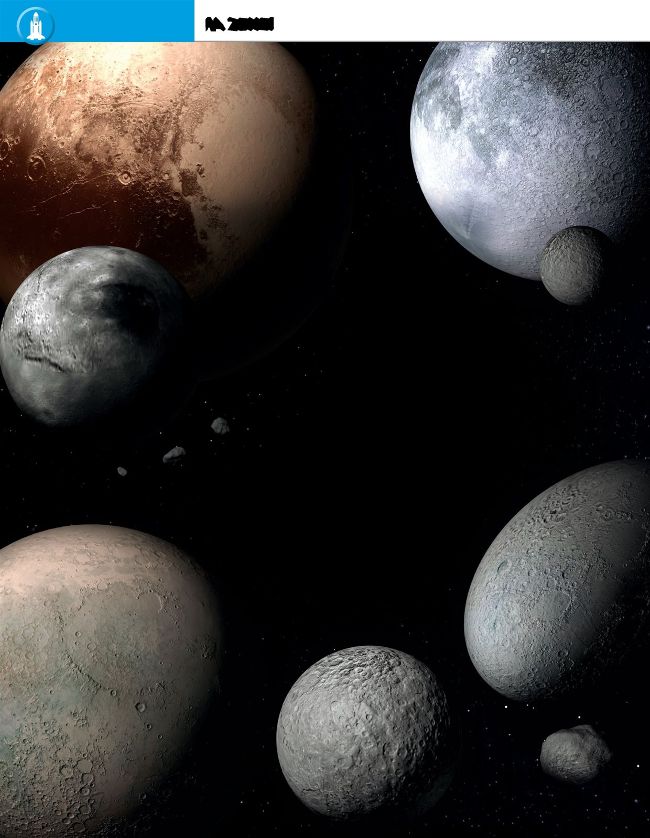ASTEROIDS, MOONS AND DWARF PLANETS
MEET THE ROCKY ODDITIES OF THE SOLAR SYSTEM AND DISCOVER WHAT DEFINES THEM
Words by Scott Dutfield

© Getty
Our Solar System is essentially made up of different sized and shaped rocks, and a couple of big balls of gas, which are all orbiting a hydrogen-burning behemoth we call the Sun. To give this interconnected system order, scientists throughout history have categorised the Solar System’s largest celestial bodies into terrestrial planets, gas giants and ice giants.But what about the smaller stuff?
Dwarf planets, moons and asteroids fill our Solar System. At the current count there are five dwarf planets, over 200 moons and between 1.1 and 1.9 million asteroids that are over 0.6 miles in diameter residing in the Solar System. But how do you define what’s what? There is a whole host of criteria that the International Astronomical Union (IAU) has outlined to determine whether a celestial body is a dwarf planet, moon or asteroid.
In brief, a dwarf planet is a celestial body that orbits the Sun and assumes an approximate spherical shape, and has also cleared the area around its orbit of other comparatively sized bodies. Moons, on the other hand, are natural satellites that orbit other larger celestial bodies. However, the IAU provides no scientific definition of what it means to be a moon.